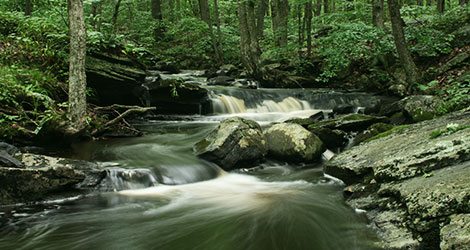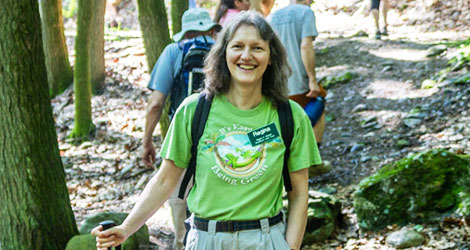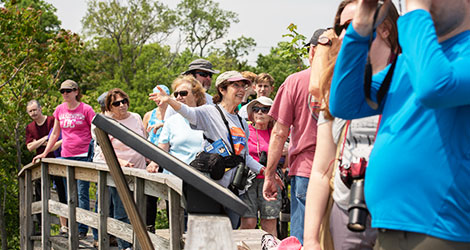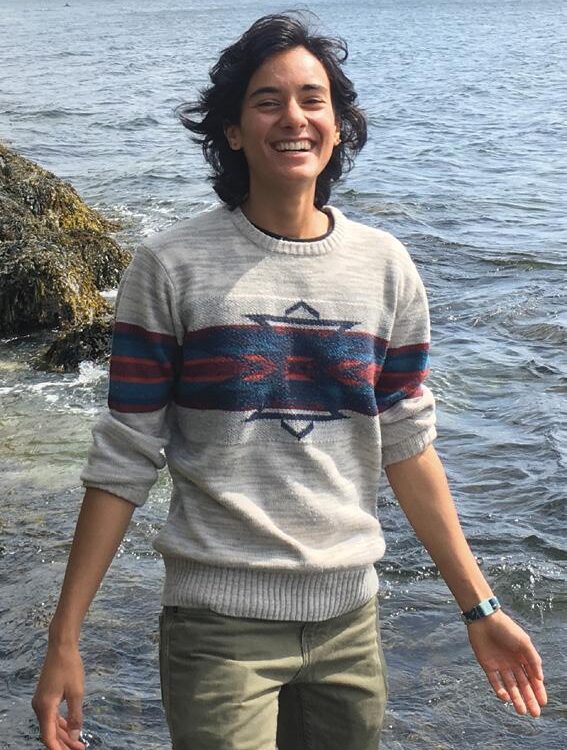
Creating a More Inclusive Environment
In order to imagine a brighter future, we must first examine our past.
By Timothy Brown
PART 1:
Confronting a Complicated History
In the pre-dawn hours of January 19, 2022, workers at the American Museum of Natural History in Manhattan carefully removed a statue of Theodore Roosevelt riding a horse that had stood for more than eight decades at the entrance of one of the country’s premiere scientific and cultural institutions. The statue, officially called “Equestrian Statue of Theodore Roosevelt, had long been the subject of intense scrutiny due to the portrayal of two shirtless men who flanked Roosevelt’s steed on either side— one Native American, the other of African descent. Highly criticized for its colonial and racist overtones, many viewed the statue not only as a whitewashing of history, but as a reflection of white supremacy itself.
Roosevelt is often fondly remembered as the “conservation president.” He was an avid outdoorsman and adventurer, and a passionate defender of the natural world. During his two terms in office, he doubled the number of national parks, and he signed the 1906 Antiquities Act, legislation that Roosevelt used to designate eighteen national monuments, including Devil’s Tower in Wyoming. He also designated 150 national forests, 51 federal bird reserves, and four national game reserves that collectively spanned some 230 million acres across the country. It is undeniable that Roosevelt’s bullish approach to conservation was effective—it safeguarded mountains, canyons, forests, and other natural wonders from industrial development and commercial exploitation. Today, these public lands attract tens of millions of scientists, scholars, and tourists annually from around the world.
But Roosevelt, like all people, was a complicated individual. While he was undeniably committed to conserving iconic landscapes, he was less sympathetic to the rights of Indigenous people who had inhabited these places for millennia. Throughout the West, American Indians were either forcibly removed from their ancestral territories or had their access significantly reduced in order to create national parks and monuments. Some tribes were year-round residents of these lands, while others would access these spaces for hunting, gathering, and sacred ceremonies. In either case, the result was the same: people who had long held deep ties to the land—physically, culturally, and spiritually—were expelled in order to create what some critics have referred to as “playgrounds for the rich.”
In both his writings and speeches, Roosevelt often referred to Indigenous people as “savages” while extolling the virtues of whites over any other race. While it may be troublesome to think of him in this way, Theodore Roosevelt was, to be blunt, racist.
Roosevelt, however, was far from an outlier in America’s early conservation movement. His friend, Madison Grant, another Manhattan socialite, helped establish the Bronx Zoo, fought for the protection of California’s hardwoods, and advocated for the establishment of national parks across the country. But rather than being remembered as a conservation hero, today Grant is better known for his writings on eugenics—an immoral and unscientific theory that suggests that humans can be “improved” through selective breeding, similar to livestock. Early eugenicists advocated for such appalling practices as forced sterilization and segregation, which they believed would help to “purify” the human race. These beliefs were closely aligned with scientific racism, a gross misinterpretation of Darwin’s theory of evolution by natural selection and Mendelian genetics that promoted the baseless idea that white Europeans are genetically superior to non-whites.
Another early conservation leader, Gifford Pinchot, a Simsbury, Conn., native and German-trained professional forester, helped to establish the U.S. Forest Service, the Society of American Foresters, and the Yale School of Forestry (one of the first in the country), and was highly influential in the early decades of the Connecticut Forestry Association (changed to Connecticut Forest and Park Association in 1928). But Pinchot, who served two terms as governor of Pennsylvania, was also a delegate to the International Eugenics Congress in 1912 and 1921 (the same year he spoke at the CFA’s annual meeting) and he sat on the advisory council of the American Eugenics Society from 1925 to 1935.
Far from being a fringe movement, eugenicists moved among elite circles in both the U.S. and Europe during the first half of the 20th century. Influential scientists and theologians, politicians and public health officials, and many of the leading psychologists and anthropologists of the day helped to popularize—and normalize—eugenics as a scientific discipline. Perhaps the clearest, most horrific example of the application of eugenics is the Holocaust when Nazis attempted to eliminate Jewish, disabled, and LGBTQ+ people, as well as other ethnic minorities, through ethnic cleansing. It is deeply disturbing, to say the least, to know that America’s conservation movement was once aligned with such a hateful and devastating ideology.
It can be difficult to reconcile the progressive ideals and enduring achievements of early conservationists whose legacies can still be seen not only in the organizations, agencies, and policies they helped to establish, but also in the very land itself, with such misguided notions about people whose histories, cultures, and—simply put—skin color differed from their own. Viewed in one light, our national park system is one of our country’s crowning achievements often described as “America’s best idea.” But the creation of parks, monuments, and other so-called “public” lands also displaced a key functional component of these ecosystems—the Indigenous people who lived in these places and whose actions helped to shape the landscape. John James Audubon’s paintings are incomparable works of art that give viewers a snapshot into this nation’s biodiversity in the 19th century. But he also owned and sold enslaved people and openly advocated against abolition, both in this country and abroad. John Muir’s impassioned pleas led to the protection of iconic landscapes such as Yosemite National Park. But he also argued against allowing Indigenous communities, such as the Miwok and Mono people who had resided in the Yosemite Valley for thousands of years, the right to continue living, hunting, and gathering within the park’s boundaries. Muir’s vision of wilderness as a place devoid of people is one that continues to dominate conservation discourse and policies to this day. For many BIPOC (Black, Indigenous, People of Color) individuals, the not-so-subtle message over time has been that conservationists care more about animals and trees than they do about people.
Having a deeper understanding of the founders of America’s conservation movement should not lessen their achievements to create parks and protect open space as part of our collective heritage. At CFPA, today’s hope is that this knowledge will help ensure that federal public lands, as well as state-held public lands in Connecticut, actually serve everyone, not just a select and privileged few.
“In the 127-year history of CFPA, there’s been a relatively small portion of this history that we’ve been focusing on these issues, but going forward that is changing.”
Eric Hammerling
Part 2:
The Work of CFPA’s JEDI Advisory Council
One measure of how racism, rampant amongst early conservationists, continues to effect and undermine the modern environmental movement is in the lack of diversity of the boards, staff, and membership of environmental organizations. A landmark 2014 study by the watchdog group Green 2.0 of 191 conservation and preservation organizations, 74 government environmental agencies, and 28 environmental grantmaking organizations found that despite making significant improvements in promoting gender diversity within their workforces over the past several decades, ethnic minorities occupied less than 16% of board and staff positions and less than 12% of leadership positions. The report, “The State of Diversity in Environmental Institutions: Mainstream NGOs, Foundations, and Government Agencies,” authored by Dorceta Taylor, currently Senior Associate Dean for Diversity, Equity, and Inclusion and Professor of Environmental Justice at the Yale School of the Environment, served as a major wake-up call for environmental organizations and government agencies who, particularly in light of the current movement for racial justice, are now working hard to develop a more diverse workforce.
For the past five years, Green 2.0 has continued to track the diversity of environmental organizations, who, on the whole, remain majority white. Still, their most recent 2021 report found that people of color now account for over 28% of the workforce in these organizations. And while there is clearly much work to be done, many organizations, including CFPA, are taking concrete steps to acknowledge and address historic injustices, diversify their boards and staff; improve access to the outdoors for people of color, members of the LGBTQ+ community, and other historically marginalized populations; and create a more inclusive community for people from all backgrounds.
“In the 127-year history of CFPA, there’s been a relatively small portion of this history that we’ve been focusing on these issues, but going forward that is changing,” said Eric Hammerling, CFPA’s executive director. Under his leadership, CFPA has established a JEDI Advisory Council (JEDI stands for Justice, Equity, Diversity, and Inclusion) to “incorporate the needs and perspectives of people and communities of color into the design and implementation of CFPA’s inclusive strategic plan, programming, organizational culture, and policy priorities.”
The advisory council, which meets bi-monthly, includes both CFPA board and staff, as well as volunteer community members Marissa Jayawickrema, Jay Levy, Lauren McGregor, Edith Pestana, Marcus Sibley, and Ivelise Velazquez. They advise the Association on issues such as incorporating diversity, equity, and inclusion into CFPA’s ongoing and new work; monitoring the progress and process of equity and diversity in CFPA’s programs and communications; and addressing potential and actual implications from changes to existing or new programs. The council worked with CFPA to craft a JEDI statement affirming CFPA’s commitment to address the social inequities, institutional racism, language discrimination, bias, and other barriers that have historically limited access to the outdoors.
In addition, CFPA has established three internal action planning teams—Decentralizing Whiteness to Build Anti-Racist Culture; Understanding the Needs of BIPOC Communities; and Building an Anti-Racist Workplace— who are identifying key issues and priority recommendations for CFPA’s upcoming 2023 to 2025 strategic plan. Everyone on CFPA’s board and staff is a member of one of the teams.
“It is a justice issue when people don’t have adequate, equitable access to forests and parks.”
Marcus Sibley
“The next three years are going to be exciting because we’re going to be engaging with many individuals and communities in ways that we never have before, and it opens a lot of potential,” Hammerling said. “We’re not just talking about the need for deeper relationships; we are forming the relationships.”
For JEDI Advisory Council member, Marcus Sibley, building relationships starts with acknowledging the environmental and social justice are two halves of the same coin.
“You cannot remain silent about social justice in one breath and then tell me about the urgency of climate change in the next,” he said during a recent interview. “I don’t believe you. I literally don’t believe you.”
Sibley, who has a background in social work and family therapy, is the National Wildlife Federation’s director of partnerships for New Jersey, New York, and Connecticut. He also chairs the New Jersey Progressive Equitable Energy Coalition and New Jersey’s NAACP State Environmental Committee. “At my core I am an environmental and social justice activist,” he said. “It is my goal to get environmental groups involved in social justice fights because it is my other goal to get social justice groups more involved in environmental fights.”
Justice has been an important theme in both the environmental and climate movements for decades. In 1991, delegates to the First National People of Color Environmental Leadership Summit in Washington, D.C., crafted 17 Principles of Environmental Justice asserting the rights of all people, regardless of race, color, national origin, or income to live in a safe and healthy environment. Two years later, Connecticut became the second state in the nation to draft an environmental justice policy, and in 1994, the then-Department of Environmental Protection (now Department of Energy and Environmental Protection) hired Edith Pestana as Administrator of the state’s Environmental Justice Program.
Pestana, who’s Cuban-American, says it’s not a coincidence that BIPOC and lower-income communities have disproportionately borne the burden of industrial facilities, toxic waste sites, and other forms of environmental pollution. “All of those undesirable facilities are located in the Black communities,” she said. “It was a given, by design.”
In addition to addressing public health crises, one of Pestana’s priorities at the agency has been to connect communities of color with the outdoors through festivals and other public events. In the 1990s, for example, working with local community organizers, she helped to organize festivals at New Haven’s West Rock Ridge State Park, which was underused at the time, particularly by communities of color who live close to the park.
“We started having events there both to get people that used those parks used to seeing people of color in them and to facilitate them feeling comfortable in that park,” she said. “There was just a real movement to get urban youth into green space, into state parks and forests, and hopefully to create the environmental stewards of the future, because you’ll have equity when people see there’s someone who looks like them in those parks.”
“People who have access underestimate the power of just being able to go to a place where you can unwind,” Sibley said. “It is a justice issue when people don’t have adequate, equitable access to forests and parks. And I don’t think we should speak about it in any other way other than a justice issue.”
Marissa Jayawickrema, who began her career as a member of CFPA’s Trail Crew and currently works in cultural resources management for the National Park Service, says lack of representation and access in the outdoors creates an environment that can be hostile to people of color and other marginalized identities.
“It became obvious that trails—both the people who work on them and the people who get to benefit from them—it’s like a glaringly white demographic, very upper middle class, often laced with a lot of homophobia and misogyny and racism,” she said. “And those are things that a lot of people don’t want to talk about unfortunately.” For Jayawickrema, the daughter of immigrants, the burden of visibility can be draining.
“I’m exhausted being the only queer woman of color in all of these spaces all of the time. And that’s not right,” she said. “It’s never pleasant to show up to a trailhead and have someone question why you’re there with that tone.”
“People are comfortable when they see people who look like them,” Sibley echoed, noting that representation is not only about who is recreating outside, but equally who is staffing these spaces. “How much do you value me if you don’t trust someone like me to work for you?” he said.
The JEDI Advisory Council is a safe space for individuals to share about their personal experiences as they work to craft policies and practices that will guide CFPA far into the future. “It has allowed for people to be able to think about some of their own biases, and everyone has them. It’s about how open your heart is to change,” Pestana said.
“I love the meetings; I love the group,” said Jayawickrema. “The conversations are very elevated on very specific things like transportation and access.”
“Every organization, not just environmental ones, needs to have a JEDI council,” Sibley said, “because white supremacy does not get impacted unless we’re talking about it.”
Learn more at ctwoodlands.org/about/transparency/jedi/
Timothy Brown is the editor of Connecticut Woodlands.








